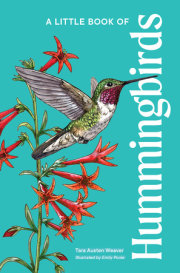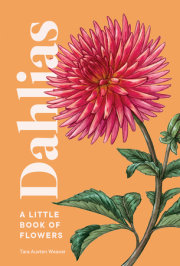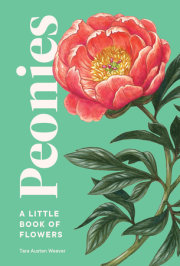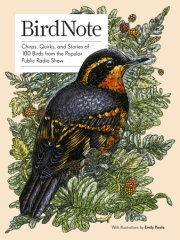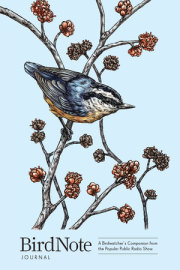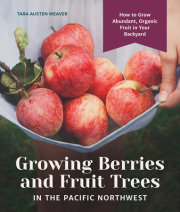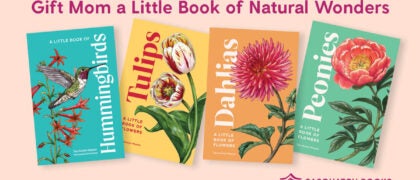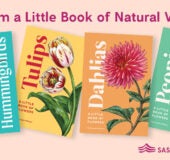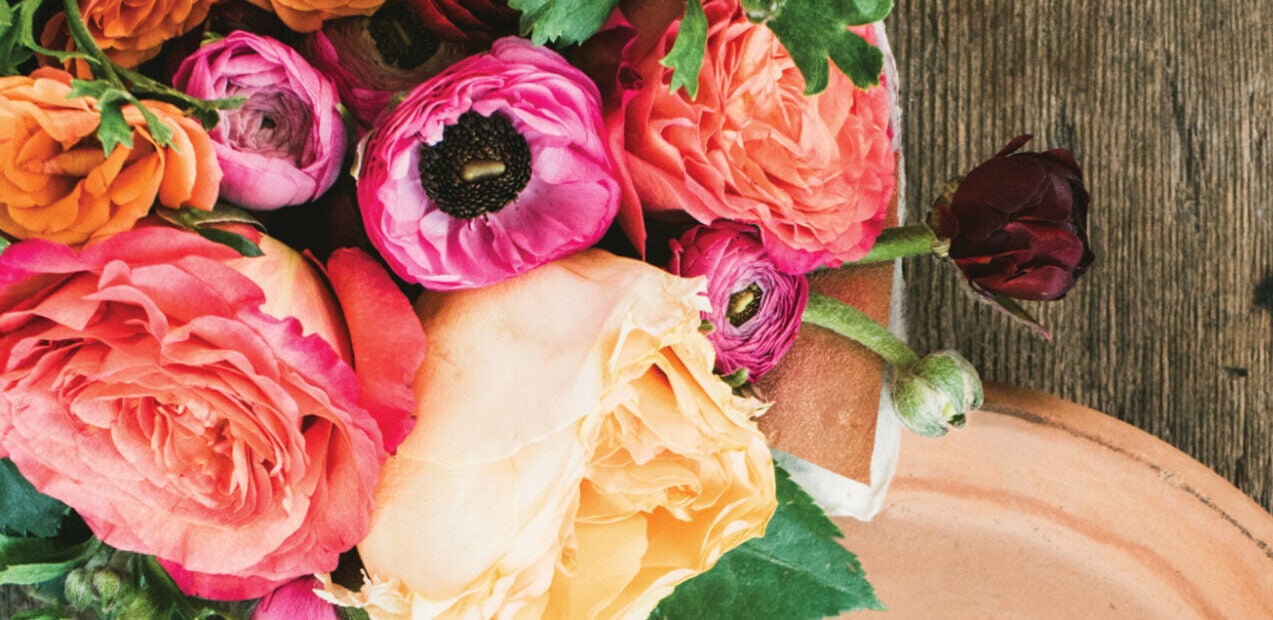ORIGIN OF THE SPECIES
“The tulip is a flower that draws some of the most exquisite lines in natures and then, in spasms of extravagance, blithely oversteps them.” --Michael Pollan,
The Botany of Desire “Tulips were a tray of jewels,” wrote E. M. Forster in his novel
Howards End, and the gem comparison is an apt one. After a drab winter, tulips sally forth with their long stems and oval-shaped buds opening to blooms all colors of the rainbow--from deep scarlet and purple, to the Easter egg pastels of pink, lavender, and pale yellow. Tulips come striped, painted in contrasting colors, or rimmed in white or gold. Swaying, as they do, above the new growth of a spring garden, tulips are a symbol of rebirth, as colorful and triumphant as a flower could be.
The story of tulips weaves through political and economic history like few other flowers. These humble bulbs we tuck into garden beds have been gifted by sultans and queens, they have been celebrated, stolen, carried across oceans and plai[ns; at times they have been considered as precious as rubies. Happily for us, these days they are affordable luxuries--and easy to grow as well. More than anything else, tulips are a gift we give ourselves. The bulbs we plant each year are an act of hope that has played out for centuries--the hope that this small autumnal effort will yield great beauty come spring.
Modern-day tulips trace their roots to a swath of territory stretching from the Mediterranean across Central Asia and up into the Tian Shan mountain range. Tulips have been able to thrive in climates with cold winters and hot, dry summers, as their bulbs allow the plant to go dormant and store energy for the next spring. While the wild species are shorter and smaller than our modern-day tulip hybrids, they share the same six petals and elongated gray-green foliage recognized throughout the world.
The earliest known physical record of tulips dates to illustrations in a twelfth-century bible, where the text is embellished with images of the flowers. Tulips were certainly cultivated before that time, but the history has been lost. Mention of the flowers do show up in several versions of ancient legend, however. In one, a Persian youth is so heartbroken over the loss of his beloved that he mounts a favorite horse and rides it at full speed off the edge of a cliff to his death. It is said that red tulips sprouted from the ground that was soaked in his blood. Another story tells of a lovelorn young man rejected by his sweetheart, who cries with the pain of heartbreak. Where his tears fall to the ground, tulips grow. For generations now, tulips have been a symbol of great love.
Tulips also feature in early Persian poetry, written during the Islamic Golden Age (eighth to thirteenth centuries). “In the flaming light of the morning sky,” wrote Omar Khayyam (1048 to 1131), a scholar, mathematician, astronomer, philosopher, and poet, “the wine in your cup looks like a tulip in spring.” Another poem, by the theologian, Islamic scholar, and Sufi mystic Jalāl ad-Dīn Muhammad Rūmī (1207 to 1273)--more commonly known today as Rumi--also refers to the flowers:
“
December and January, gone.
Tulips coming up.”
It was in sixteenth-century Turkey, however, and the Ottoman court of Suleiman I that tulips rose to royal prominence. Suleiman I (1494 to 1566) was a powerful ruler whose interests extended from politics to poetry and plants, and he made tulips the official flower of his court. The English name
tulip is said to come from Westerners adopting the Turkish word for turban, which the flowers were thought to resemble. Men also sometime wore tulips tucked in their turbans as decoration. In Turkey, however, tulips are referred to by their Persian name
lale (pronounced “lah-lay"). Because the word
lale uses the same Arabic letters as Allah, tulips were considered flowers of God.
The Turkish passion for tulips continued long after Suleiman’s reign. Lâle Devri--the Tulip Age--took place under Sultan Ahmed III, who ruled in the early 1700s. Tom Lodewijk, in his
Book of Tulips, describes the annual tulip festival held during this period. “Hundreds of exquisite vases were filled with the most expensive tulips available and were placed on stands decorated with crystal balls filled with colored water. Crystal lanterns cast an enchanting glow throughout the gardens. Canaries and nightingales in cages hung on branches to delight the guests with their song.” Apparently the guests were required to wear colors that harmonized with the flowers. Tulips became a symbol of the Ottoman Empire, seen in decorative paintings from that period on ceramic and tile.
It was from Istanbul (then called Constantinople), a city that often served as a gateway between the East and the West, that tulips were first introduced to Europe. The details of exactly how and when have not been recorded, but one of the few references we have comes from a Swiss botanist by the name of Conrad Gessner (1516 to 1565), who wrote of seeing a deep-red tulip in 1559, in Augsburg (present-day Germany). It was in a garden that belonged to Johannis Heinrich Herwart, a magistrate. The tulip, he said, had been grown from seed brought from Constantinople. Gessner described the tulip in great detail, later illustrating it in a full-color woodcut.
Tulips came to the Netherlands in part through the work of Carolus Clusius, who became head botanist at the University of Leiden in 1593. Born in present-day France, Clusius was well connected in the plant world and frequently received seeds and bulbs from far-off places. He established the imperial botanical garden in Vienna at the invitation of the Holy Roman Emperor Maximilian II, and he was friends with the Austrian ambassador to the Ottoman Empire, so it is likely the bulbs came through one of those channels. Clusius planted tulips when he first arrived in Leiden, and when they bloomed he received numerous offers to buy the bulbs--but he refused to sell them. The flowers must have made quite an impression because would-be buyers crept into the garden in the dark of night and stole the tulip bulbs.
Interest in tulips spread in Western Europe as bulbs were traded and sold by travelers, merchants, and botanists--as well as by artists, who were especially taken with these unique, long-stemmed blooms. Tulips were bred far beyond their original wild forms into more dramatic cultivars. Both the ease of trading bulbs and a growing merchant class that enjoyed the modest luxury of flowers meant that tulips found an eager and appreciative audience. But nowhere did they make more of an impact than in the newly formed northern coastal country of the Netherlands.
At this time, the Netherlands was the wealthiest country in Europe. Their vast trading empire was based on shipping—started when the Dutch began transporting wheat from the Baltic countries. The Netherlands soon grew to challenge the might of the Portuguese and Spanish maritime trade, eventually setting up a colonial empire with outposts around the globe, from the tip of Africa to the Hudson River Valley, the Caribbean, South America, and throughout Asia--particularly the islands now known as Indonesia. Unlike other colonial powers that claimed land, the Dutch focused on trade--sugar, spices, tobacco, chocolate, gold, ivory, and the transportation and sale of enslaved people. The Dutch merchant fleets also engaged in piracy, attacking and plundering Spanish and Portuguese ships.
Dutch trade was conducted by two private merchant companies that functioned like foreign arms of the Dutch government--seizing valuable assets and territory in other countries. The Dutch West India Company traded in Africa, the Caribbean, and the Americas, while the Dutch United East India Company (known as the VOC) operated in Asia. The VOC was the first multinational corporation financed by shares--funded by the government but also by private investors--and the Dutch established the first stock exchange. This put the idea of investment in future shares--a piece of paper that represented goods--into the public consciousness.
At the same time that Dutch fortunes were being made, tulips were becoming more desirable--with unique shapes and colors being bred each year. Most popular were the “Broken” tulips, which featured petals streaked with flames of irregular color: red on white background, gold on scarlet. These streaks are caused by a virus passed along by aphid infestations, but at the time the effect seemed random and uncontrolled; this made the bulbs even more valuable and sought after.
The Dutch had recently won their independence from the Spanish Hapsburgs and after years of chafing under the rule of a Catholic monarchy, many in the Netherlands were embracing Protestantism. Dutch Protestant values promoted hard work and modesty, and looked down on ostentatious displays of wealth, which smacked of their former Spanish overlords. Protestants also rejected depictions of religious icons--no paintings of the holy family, no bible scenes--as it was thought to cheapen them. Instead, increasingly well-to-do merchant families in Europe’s wealthiest country commissioned paintings to decorate their new and now larger homes--portraits, still life paintings, and more. And to show their prosperity in an understated way, they posed with tulips. Decorative gardens had always been a sign of wealth, now these expensive blooms were a status symbol as well.
A Visual LanguageBecause the Dutch Reformed Church explicitly forbade the use of religious iconography, artists of the seventeenth century found ways to disguise their messages by developing a secret language of symbols. This shows up most significantly in the many still life paintings that survive from this period. What might look like the remains of a meal to the average viewer today actually held a coded message--bread symbolized the body of Christ, oysters warn against temptation, and meat or shellfish speak to the corrupting influence of wealth and gluttony. Dragonflies are signs of the devil, butterflies symbolize salvation, and snails--which are able to reproduce asexually--signify the Virgin Mary.
When it came to floral still life paintings, the code of symbolism was included in the book
Het Groot Schilderboek, based on lectures by the artist Gérard de Lairesse (1641 to 1711). While paintings of expensive, cultivated flowers spoke generally to wealth and prosperity, each flower had its own significance--a forerunner to the language of flowers popular in the Victorian era. In Dutch still life paintings, violets symbolize modesty, carnations refer to eternal life, ivy signifies the resurrection, while sheaves of wheat are a sign of Christ. And the tulip, which features so prominently in floral still life paintings of the era, symbolizes nobility. Knowing this, it’s easy to understand why aspiring and newly wealthy Dutch merchants were so eager to align themselves with these beguiling flowers.
***
In the 1630s, this fascination with tulips resulted in what many consider the first economic bubble--called
Tulpenwoede in Dutch (tulip mania). Because of the nature of the flowers, those who invested in tulips were buying bulbs that had not yet been harvested--future shares, as it were. These trades did not take place on a regulated exchange, but in the rooms of local pubs and saloons, and prices were whatever someone would pay. At one point, a single bulb of the most coveted cultivar--the red and white flamed tulip ‘Semper Augustus’--sold for 10,000 guilders, about the same price as a house in the most desirable area of Amsterdam at that time. Such speculation was unsustainable and the Dutch tulip bubble collapsed in 1637, leaving investors and aspiring tulip fanciers with sheaves of paper now worthless.
The Netherlands was not the only country to have embraced the tulip. A version of the Dutch tulip mania took place in France between 1634 and 1639, with aristocratic women wearing tulips on the neckline of their gowns like jewels. A single bulb of a red and white striped tulip was used in place of a wedding dowry. Bred by the bride’s father, the tulip was named, appropriately enough, ‘Mariage de ma Fille’ (marriage of my daughter). As Anna Pavord writes in her seminal book on the flower, tulips were “the most sought-after, costly, and prestigious flowers that a seventeenth-century gardener could possess.”
Tulips crossed the English Channel at some point in the middle of the 1500s, likely brought by Flemish settlers, who had been breeding tulips for some time. Flanders is also credited with introducing tulips to the French. By the early 1600s tulips were well established in English gardens--adopted by the wealthy as a symbol of prestige and planted on the grounds of castles and grand estates. It became fashionable to plant arrangements of bulbs on parterres and in formal knots, and wealthy aristocrats submitted orders for tulip bulbs by the hundreds--and occasionally thousands. Tulip breeding was also taken up as a hobby by craftsmen in England on a smaller, more deliberate scale, where it continues on to this day.
English Florist TulipsIn the United Kingdom a piece of tulip history lives on--in the Wakefield and North of England Tulip Society. Founded in 1836, it was one of numerous societies that championed the “florist tulips, those flamboyant blooms that are “broken” due to a bulb disease (
florist was an early term for “flower enthusiast”). Broken tulips were wildly popular and sought after by the Dutch in the 1600s, but they found a fond and enduring home among the craftspeople and working class of northern England, who raised them to breed and show. These shows were not fancy events—the shows took place in pubs and the tulips were displayed in brown beer bottles.
Within florist tulips, there are different types of bulbs and classifications. “Bizarre” refers to a base yellow tulip overlaid with a darker color pattern; “Rose” is a white bloom with red or pink coloration; and “Bybloemen” is white with black or purple. When speaking of the color patterns, “feathered” refers to colors that emerge from the petal edge, while “flame” is used to describe color that runs up the middle from base to petal tip. To see a roomful of these striking blooms is quite a sight.
The Wakefield group is the only society that remains from this period of tulip fancying. Each May sees an annual show that features dozens of these vintage cultivars, still displayed in brown beer bottles, bred and preserved by loyal members for nearly 200 years.
TulipSociety.co.uk
***
Tulips made their way to the colonies of North America via Dutch traders and settlers, who controlled areas of present-day New York, New Jersey, Connecticut, and Delaware in the early 1600s. They were carried by those who wanted a small but significant reminder of home. The Puritan settler group who arrived on the
Mayflower in 1620 had lived in Leiden before their journey, though we know of no connection to the tulip trade.
Tulip bulbs once drove the Dutch to a spending frenzy, but they also have provided a pillar for their economy. Flower bulbs thrive in the low-lying sandy soil of the Netherlands, near the sea, where the rain and cold winters help with bulb formation. The Netherlands now produces 80 percent of all flower bulbs grown worldwide, not just tulips, and the Royal FloraHolland flower auction in Aalsmeer is the largest in the world. In 2020, the Netherlands tulip bulb trade brought in more than 220 million euros, with additional money to be made in the cut flower market; the Dutch devotion to the tulip has been well repaid.
How amazing, really, that these humble bulbs have traveled the world--carried along the Central Asian trading routes, exchanged for riches, tucked into pockets, mailed to foreign countries, even consumed in times of strife. It’s the unique nature of the tulip that makes it possible--a bulb that goes dormant for months at a time, yet springs into life with water and warmth. How lucky we are to have tulips: so much beauty from the most unassuming little package.
Copyright © 2023 by Weaver, Tara Austen. All rights reserved. No part of this excerpt may be reproduced or reprinted without permission in writing from the publisher.















